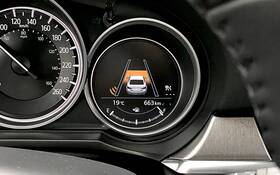Survey: Canadians Find Driver Assist Features Confusing, Annoying
It’s not the first time we hear about issues with the numerous driver assist features and technologies found in today’s vehicles, but with pandemic-related restrictions being gradually lifted across the country and summer vacations fast approaching, Canadian drivers will have more opportunity to use them.
But get this: a new Léger survey conducted on behalf of Allstate Canada reveals that 52 percent of all respondents rarely or never rely on their car’s driver assist features. Among these, 42 percent mentioned they were distracted by the warnings. Even worse, 56 percent admitted they disabled at least one of the systems, either out of annoyance or because they don’t trust them.
- Also: Survey: Unsafe Driving Still on the Rise Across Canada
- Also: Apple CarPlay, Android Auto are Worse Than Drunk Driving, Study Shows
"Vehicles today are equipped with a host of tools to improve safety on the road, but still many people don't fully understand how to use them, get distracted by them or turn them off, especially on Quebec roads where orange cones in construction zones can cause an overabundance of alarms and warnings,” notes Carmine Venditti, Allstate Agency Manager, Montreal-East area.
"Being knowledgeable about these assistance technologies allow for a better understanding of their usefulness. As a result, the driver can benefit from better visibility around the vehicle, and make safe decisions, potentially avoiding a collision."

Allstate automotive insurance data shows that vehicles equipped with more driver assistance technologies tend to have a lower frequency of claims than those featuring only a backup camera.
5 Useful Tips
The insurance company offers several tips and best practices for Canadians who purchase and drive a vehicle equipped with all sorts of advanced safety and driver assist features:
- Do not hesitate to ask the dealer any questions about the technology found in your vehicle, so you can better understand its purposes and how to use its features properly. You can also find useful information in the owner’s manual.
- Get familiar with features specific to your vehicle before using them on public roads, which may help prevent a collision.
- Keep your full attention on the road as some driver assist technologies may only work in specific conditions, for example within a certain range of speeds.
- Always make sure to have a good look around the vehicle because the rear-view camera may not provide a complete picture.
- Program your navigation system or set up your infotainment system before you hit the road. And if you have to use a device or change your playlist, pull over in a safe place.









